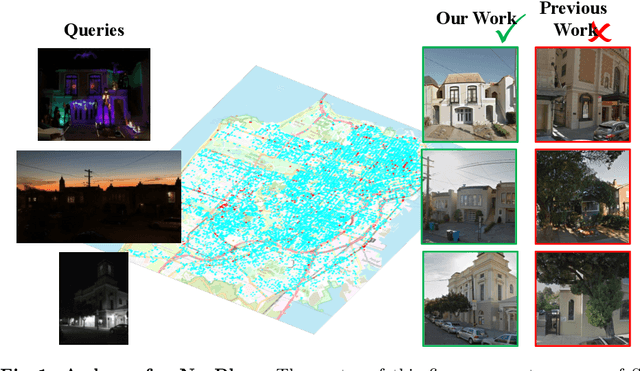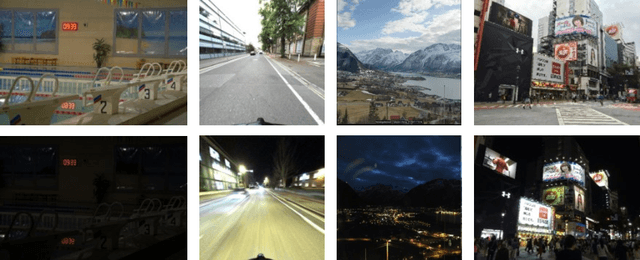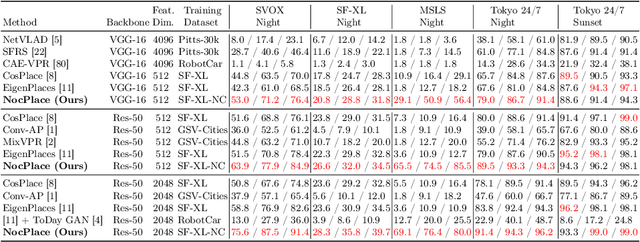NocPlace: Nocturnal Visual Place Recognition Using Generative and Inherited Knowledge Transfer
Paper and Code
Feb 27, 2024



Visual Place Recognition (VPR) is crucial in computer vision, aiming to retrieve database images similar to a query image from an extensive collection of known images. However, like many vision-related tasks, learning-based VPR often experiences a decline in performance during nighttime due to the scarcity of nighttime images. Specifically, VPR needs to address the cross-domain problem of night-to-day rather than just the issue of a single nighttime domain. In response to these issues, we present NocPlace, which leverages a generated large-scale, multi-view, nighttime VPR dataset to embed resilience against dazzling lights and extreme darkness in the learned global descriptor. Firstly, we establish a day-night urban scene dataset called NightCities, capturing diverse nighttime scenarios and lighting variations across 60 cities globally. Following this, an unpaired image-to-image translation network is trained on this dataset. Using this trained translation network, we process an existing VPR dataset, thereby obtaining its nighttime version. The NocPlace is then fine-tuned using night-style images, the original labels, and descriptors inherited from the Daytime VPR model. Comprehensive experiments on various nighttime VPR test sets reveal that NocPlace considerably surpasses previous state-of-the-art methods.
 Add to Chrome
Add to Chrome Add to Firefox
Add to Firefox Add to Edge
Add to Edge